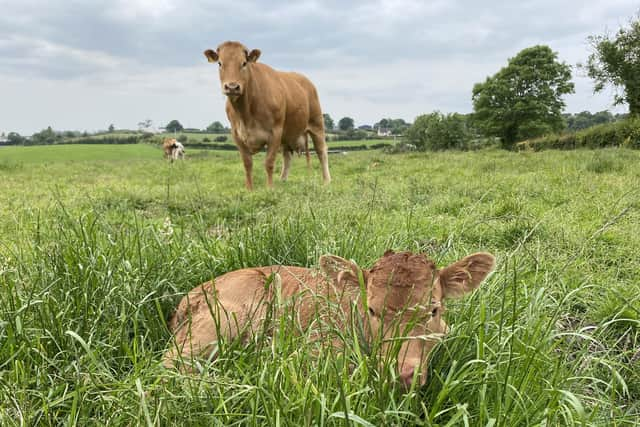Temporary movement restrictions in BVD breakdown herds
and live on Freeview channel 276
Ahead of the introduction of herd restrictions by DAERA, this request is being supported by the BVD Implementation Group, in an effort to reduce transmission of the BVD virus between herds.
There have been BVD outbreaks where the only apparent explanation for the introduction of disease has been the purchase of cattle (that had negative BVD test results at birth) from herds where BVD positive animals were present.
Advertisement
Advertisement
These profiles suggest that transiently infected animals may have carried the BVD virus from the infected herds.


The cattle industry in Northern Ireland want to see BVD eradicated as soon as possible, to improve animal health and to allow herd owners to benefit financially.
Stakeholders in the programme have put several measures (including the abattoir ban and Farm Quality Assurance Scheme non-conformances) in place, to encourage prompt culling of BVD Persistently Infected cattle.
The BVD Implementation Group does not have enforcement powers to disincentivise the retention of BVD positive cattle, however, the recent assurance from DAERA Minister Edwin Poots that movement restrictions will be introduced for herds with BVD outbreaks, has been welcomed as a vital development.
Advertisement
Advertisement
A spokesperson stated: “Latest figures show that only 128 of 148 (86 per cent) BVD positive cattle that were disclosed in January were removed from their herds within five weeks of the result being made available to the owner; this rate being the same as the overall rate of removal in 2021.
“Farmers are also being encouraged to make significant efforts to keep cattle away from any boundaries where cattle from neighbouring herds may be present, and to reduce contacts of visitors to their farms with livestock, to reduce the possibility of virus-contaminated material being brought into the herd inadvertently.
“Herd owners, who are importing cattle, are being reminded about the requirement to obtain a BVD status for these cattle, as NI adopts a fortress approach to keeping BVD out,” they added.
“In 2021, five cattle that were imported from mainland Europe had test results after arrival in NI that on interpretation classified them as being Persistently Infected (PI) with BVD.
Advertisement
Advertisement
“Where the possibility exists that purchased cattle may have recently been exposed to the BVD virus, it is advised that they are isolated from other stock (particularly pregnant stock) for four weeks after purchase.
“Pregnant non-PI cattle may carry a PI calf if they were exposed to BVD virus during early pregnancy, so any purchased heifers or cows should be isolated until they have calved and the calf has tested negative for BVD virus.
“Prompt identification and removal of BVD PI cattle are the keys to BVD control and it is vital that the virus is confined to the affected herd.”
It is a legal requirement that affected cattle are isolated within housing to prevent direct or indirect contact with other susceptible animals, so excellent hygiene by stockpersons has an important role to play.